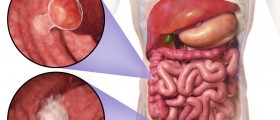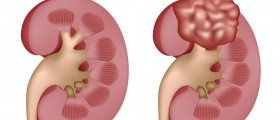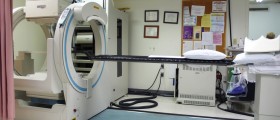Most Painful Type of Cancer
Pain is a sign that our body uses to tell us that something is wrong. Nervous system via nerves informs the brain that particular part of the body is damaged. When information comes to the brain, we experience pain. Most cancer pain is caused by the tumor pressing on bones, nerves or other organs in the body. Also, pain can be related to cancer treatment.
Cancer & Pain
Between 30% and 50% of people with cancer will experience some sort of pain. However, some patients affected by cancer don’t experience pain. Amount of pain associated with cancer depends on type of cancer, the stage of cancer, where the cancer is and if cancer or cancer treatment has damaged any nerve.
Severe pain does not automatically mean that the cancer is growing or spreading. Big tumor may not cause almost any pain while tiny tumor if pressing on a nerve or spinal cord can lead to extreme pain.

Pain usually increases as cancer progresses. Advanced cancer is typically followed by pain. Advanced cancer means that the disease has spread or returned after the treatment. Studies have shown that 90% of patients with advanced cancer experience severe pain. It is most commonly due to tumor that metastasizes to the bone. Such pain can be relieved to certain degree with the help of appropriate treatment.
Cancer treatment such as radiation or surgery can also cause pain. Pain induced by cancer treatment usually starts or intensifies after the treatment is over. Such pain can be present for several months or even years after ending of the treatment. It is caused by nerve changes and it is sometimes called persistent pain if present all the time. This type of pain is hard to treat with over-the-counter painkillers and requires other treatments.
- Intensity is one of the most relevant characteristics of pain, regarded also as the gold standard for pain assessment, which often guides the evaluation and choice of treatment options. Different methods are used to measure intensity, with Numerical Rating Scales (NRS) being one of the most frequent ones.
- According to its anatomic location cancer can affect any body tissue, including viscera, bone, soft, and nervous tissue. It is not uncommon for oncological patients, especially when pain is related to metastatic cancer, to have more than one site of pain and this important information is usually recorded using body maps that are included in many assessment tools. Information should be gathered regarding all pain sites.
- Considering the clinical characteristics of pain in cancer patients, based on the recognition of a repeated cluster of signs and symptoms and the relationship of pain with the cancer, it is possible to define some clinical entities which consolidate into specific pain syndromes. The identification of the syndrome can help identify the etiology, prognosis and guide therapeutic interventions.
- Traditionally pain has been classified as acute or chronic, with chronic pain considered as persistent or recurrent pain lasting for a period longer than three months. However, when talking about cancer pain, considering that with the progression of the disease also the damage caused to tissue can progress, it is difficult to make a differentiation between acute and chronic.
- Neuropathic pain (NP) is present in about 19% of patients with cancer pain; 39% if patients with mixed pain are also included. The clinical characteristics of NP are different from those encountered in patients with nociceptive pain and are characterized by the presence of sensory alterations in terms of both hypersensitivity (positive) and hyposensitivity (negative) symptoms and signs.
Influence of Pain
Pain can strongly influence your physical and emotional state. Pain depends on your tolerance and it is an individual experience. That is why, individual treatment plan is necessary to control the pain. You must describe the pain in details to your doctor so that he or she could choose the best treatment. You should explain how your pain looks like, if it is stabbing, burning or aching. Explain where the pain is, if it is located in one area or if it is spreading beyond that area.
The doctor also needs to know if this pain starts suddenly or develops gradually. Frequency of the pain is important information as well. Finally, you must tell your doctor what relieves your pain, if it is a massage or changing position or if it is heat or cold.

















Your thoughts on this
Loading...